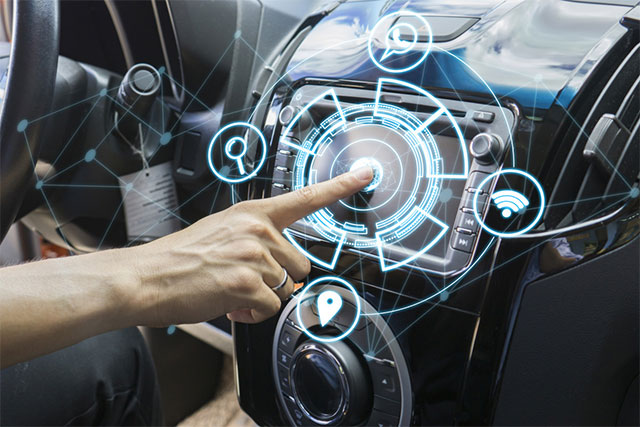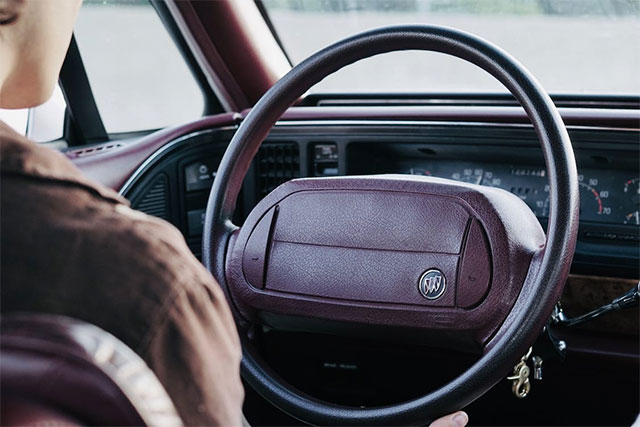Have you ever gazed upon an 18-wheeler or a farm tractor and pondered their epic journey? Not just the miles they’ve clocked, but the centuries they’ve braved through? Industrial vehicles – those massive metal beasts that keep our industries thriving and fields producing.
They may have evolved greatly from their clunky ancestors that first grunted down dirt roads, but as we stand on the edge of a futuristic tech revolution, what can we expect from these mechanical warriors? Will they become cleaner, smarter, or perhaps even dawn a touch of sci-fi? It’s time to rev up our imagination engines for an exploration into the future!

Table of Contents
The Evolution of Industrial Vehicles
Our voyage takes us back to the industrial revolution when steam-powered vehicles emerged as iron horses ahead of their time. Sure, slow-paced and slightly hazardous, yet they opened up boundless opportunities. Over the following decades, they morphed into a versatile clan of vehicles: trucks carried goods across continents, buses moved hoards of commuters daily while tractors undertook farming responsibilities to sustain us all.
But it was internal combustion engines that made history with their quantum leap in the game. Guzzling gasoline by the tank load didn’t matter; it made machines faster, mightier, and efficient enough to keep things running smoothly. Next came diesel engines which sent industrial vehicle endurance skyrocketing! Now these massive machines could handle any beating life threw at them.
And then came electronics which transformed strength into intelligence – turning truck cabins into high-tech cockpits with GPS tracking systems embedded in digital dashboards and even rudimentary AI keeping watchful eyes on performance benchmarks. Our humble truck’s terminals became data centers on wheels!
What about those spare parts scattered throughout massive stores? Their quality and accessibility have remarkably improved over time. Industry-leading services like Maurelli SPA are the best proof of it.
Each of these tech milestones was a game-changing landmark shaping the industrial monsters we see today. But with AI, clean energy, and flying trucks looming on the horizon, one can’t help but ponder – what’s next in the evolution of industrial vehicles?
Emerging Technologies and Future Trends
Our spark plugs are giving way to an entirely new game, filled with microchips, wires, and maybe even a couple of batteries. We’re going electric, self-driving, and everything in between – all in one lifetime!
Speaking of electric – that buzzword is about to get louder than your old exhaust. Think Tesla on steroids but convert that image into massive trucks and tractors. Our heroes are powered by clean electricity and promise a greener tomorrow alongside their lower running costs. Gone are the days of guzzling gas; these monsters are gliding on the roads without leaving a trail of smoke behind.
Hold on tight while we steer right into autonomous driving! No longer it’s just for some Uber or Lyft sedan services. The goal this time around is strictly focused on revolutionizing trucking big-time. Imagine an uninterrupted convoy of driverless trucks rolling down highways smoothly synchronized like dancing wheels on stage. With AI-driven rigs at play here, reducing accidents while increasing efficiency is just the beginning.
However, let’s not stop here because there’s more where that came from! Picture every vehicle having a digital twin floating up in the cloud-world ushering predictive failure resolutions before they visit us down below – neat, huh? Digital twins could ultimately improve routes in real-time predictions, even enhancing design outcomes for more effective vehicles rendering an invisible co-pilot working alongside us.
But don’t break yet because there’s still so much left! IoT for connected vehicles now connects us all. Smarter maintenance via AI becomes another possibility thriving along with 3D printing – allowing special spare parts as required to be delivered without any preconceived fuss!
So what does this mean for our trusty workhorses? Stopping short of just adding some pizzazz to your ride or sleeker dashboard, let’s back things up and take in the bigger picture – a transformation is already on its way! These trending technologies are revamping how we move people and goods, all while cutting costs and staying mindful of our carbon footprint.
Challenges & Solutions
Can you imagine zipping around in electric trucks or lounging while autonomous machines handle the driving? Sounds like something straight out of a sci-fi flick, huh? But as much as we’d love to zip forward without a hitch – there are some bumps in the road.
First things first – charging infrastructures. Yes, these sleek EVs would need a whole new network of rapid-charging stations. We might already have charging stations for our personal cars, but how about equipping entire fleets? It’s not exactly an overnight process, and unfortunately, those flashy stations aren’t blossoming all over right now.
Then comes the tricky business of autonomous driving. Sure, we’ve all seen videos of Tesla cars gliding smoothly along highways with drivers keeping their hands off the wheel. But how will these machines stand up against real-world chaos? Think unpredictable weather conditions, rush-hour traffic jams, and, let’s not forget – human drivers! While huge advancements have been made in AI tech lately, handing over complete control is still a wee bit far away.
So what can we do then? We reckon taking it one step at a time sounds like practical advice here – transition before transformation! How about starting with hybrid vehicles that act as pit stops on our way to total electrification? The same goes for autonomous features. Semi-autonomous capabilities such as intelligent lane-keeping or crash detection help ease us into fully autonomous autos.
Wrap-up
Sure, there are still some obstacles ahead. However, consider it as an adventure – all journeys come with challenges, after all. Let’s step on the throttle gently and get closer to our goals one day at a time. Whether cruising around in electric trucks or taking naps while autonomous machines steer the way – we’re positive this isn’t just a futuristic change in vehicles but also an entire reimagination of our world!













